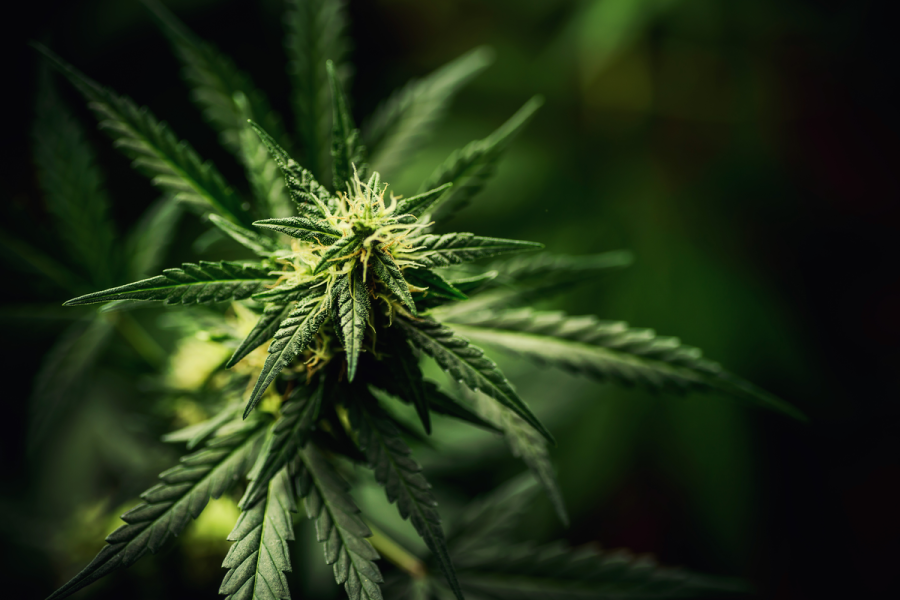Columns
Legalise marijuana
Nepal should look into the prospects of the constructive use of cannabis.
Roshee Lamichhane
It’s been a year since a private bill to allow farmers to commercially harvest cannabis was registered in the federal Parliament. Given the expanse of the availability and traditional knowledge, coupled with newly opened horizons of scientific-commercial use of the plant, it indeed is a welcome move. But for Nepali cannabis to be able to reach the global legal market, mainly for medicinal and scientific uses, Nepal needs to prepare itself on multiple fronts from legalising its farming and harvesting to branding, trading and conducting scientific research on its components and varieties. As the first move, Nepal needs to amend the Narcotics Drug (Control) Act 1976 to remove cannabis from the list of contraband drugs.
Shedding its conservative approach to cannabis and related products, the government should look into the prospects bestowed by global scientific research and constructive use of cannabis. Nepal has very attractive comparative advantages with regard to this product. Marijuana has a history of use by our people from time immemorial in various forms. It is widely available in natural pastures as well in human cultivations. It is also a fact that despite legal bans, cannabis is commercially cultivated in Parsa, Makwanpur, Dadeldhura, Kailali and the Kathmandu Valley. The hide and seek game the police engage in when trying to destroy it, and the persistence of farmers in the face of occasional government crackdowns have benefited none. The government is losing out on a huge amount of potential revenue and the farmers are being deprived of the opportunity to get a fair price.
Traditional context
Seminal research by James Fisher in 1975 established that cannabis was historically cultivated across all altitudes and terrains in Nepal. While the plant grows in the wild in the Himalayan region, extensive cultivation was recorded in the Tarai. While its consumption during rituals, social gatherings and festivities such as Shivaratri is well known, usage for varied medicinal purposes can’t be underestimated. It is also used as a cough suppressant, digestive aid, stimulus to whet the appetite, soporific, anti-malarial agent and aphrodisiac. Other research by Clarke studies suggests that northwest Nepal provides a unique example of a basic cannabis agricultural system that ensures all the three major products—seeds and resin from the female flowers as well as fibre from the stems—are extracted from the same crop. Various literature suggests that the medicinal and entertainment value of Nepali cannabis is unique in the world. It has cultural and religious significance too as it is believed to be the medicine of the gods.
Ayurveda began in Nepal more than 3,000 years ago with its cannabis-based medicines. Nepali cannabis, regarded as one of the most original, is also reputed for its strain quality. Nepali chares is held among the best available. Socially, it has been part of the Nepali lifestyle, and has been used in the form of textile (hemp), food and medicine for ages. Despite this potential, the Nepal government decided to revoke all licences to cultivate, buy and sell cannabis in 1973. This not only made its cultivation illegal, but also ended the era of economic fortunes. Reformist global trends in cannabis policy, as an ongoing movement, are likely to continue. By 2029, the size of the global cannabis market is projected to be more than $130 billion. Data from the Narcotics Control Bureau shows that in the first five months of the fiscal year 2019-20, the police seized 1,970 kg of marijuana and 418 kg of hashish, which suggest that the cultivation of cannabis is widespread in Nepal and illegal trade is rampant and unabated.
Cannabis is a big source of foreign exchange, and so its farming is ignored by the policymakers and administrators concerned even though the police do seize large hauls occasionally. Research can help us understand cannabis from many perspectives, and the knowledge gained is beneficial for both Nepal and her people in developing the best agricultural practices for Nepal-grown cannabis. It would also result in coming up with valuable products and services for future medical cannabis and hemp industries that are reckoned as emerging global markets. Research insights would also help identify and formulate the best policies and pragmatic regulations for Nepal on this daunting issue. Additionally, research evidence would prove that Nepal was the original source of cannabis in the world.
Way forward
Research in two key areas—scientific and commercial—is a prerequisite to depart from the current nonchalant scenario. First, the scientific community by now has established that extracts from cannabis have high-value medicinal use in preparing a wide range of drugs to treat migraine, headache, pain, insomnia and anxiety. Nepal cannot cater to this market despite its huge potential unless we on our own profile the species and identify their essences and extracts in compliance with scientific and academic imperatives. Second, branding and marketing activities require details regarding the composition of the product. Moreover, no large-scale commercial production of any one of the different variants of cannabis can be embarked upon without establishing their economic viability. Additionally, specific research about seeds, resin and textiles also need to be conducted. Such research should unearth its medicinal potential that is available both for domestic consumption and overseas markets.
Should Nepal succeed in establishing itself as the source of cannabis genetics for producing medicines, it would bring in huge royalty income in terms of intellectual property rights, branding and sales. The government should understand the importance of research very seriously. It may choose to conduct scientific, commercial and industrial research through its own institutions like the Department of Plant Resources, or collaborate with universities and independent research entities.




 12.12°C Kathmandu
12.12°C Kathmandu.jpg)













%20(1).jpg&w=300&height=200)

